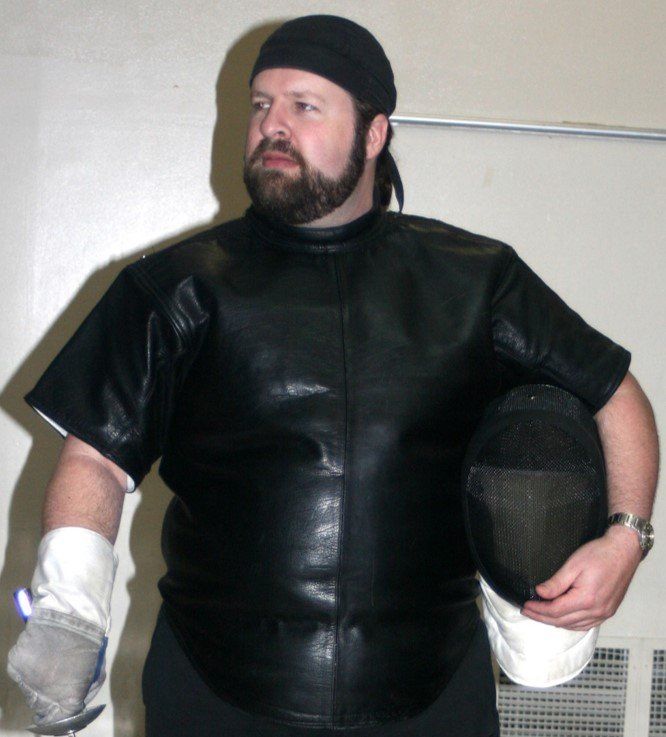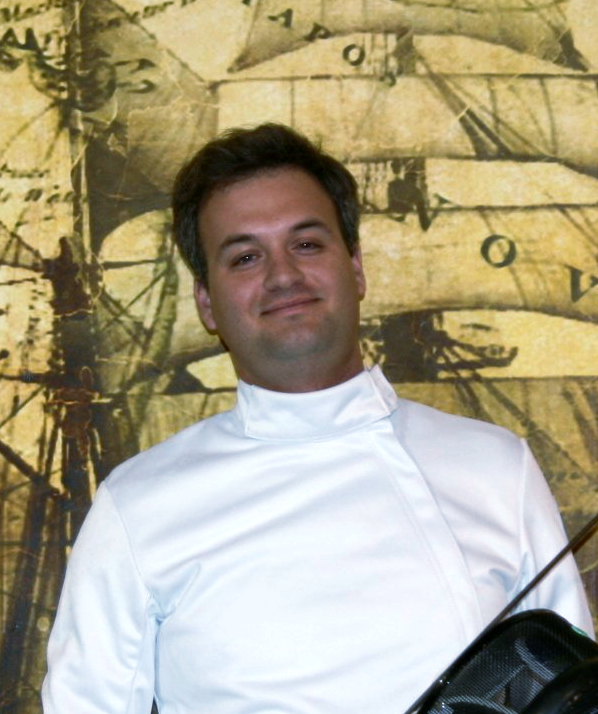OUR CLUB,
YOUR SPACE
We provide a fun atmosphere where you can hone your skills and meet new friends who share your passion!
GET READY!
Have You Ever Wanted to Sword Fight?
Have you ever pretended to be a knight, a musketeer, or a pirate battling on the open sea? We can help!
Buccaneer Blades Fencing has brought the exciting, fast-paced sport of Olympic sport fencing to St. Charles County!
Our goal is to create a fencing community based in Wentzville that draws fencers from the nearby cities of Lake St. Louis, O'Fallon, St. Peters, Troy, Warrenton, Wentzville and other surrounding communities. We strive to promote both the enjoyment of the sport of Olympic fencing as well as to compete both locally or nationally in the thousands of fencing competitions held all over the country every year!
Come join us and find out why fencing is one of the fastest growing sports in America!
BBF FENCING RANKS
In the BBF Fencing Club, there are four ranks which all fencers either start in or can earn. These arbitrary club ranks are designed to help fencers feel a sense of achievement and advancement beyond the national classifications and point systems of nationally sanctioned tournaments.
01
Swashbuckler
All fencers immediately start out at this rank, regardless of experience. A Swashbuckler is typically a person who does not generally have a great deal of skill with the blade, but nevertheless fights with a great deal of enthusiasm…just not necessarily with style or grace.
02
Privateer
To reach the rank of Privateer, a student must show physical comprehension of basic fencing blade work, footwork and techniques, as well as show a mental proficiency of the terms and ideas inherent in the sport of fencing. The rank of Privateer ennobles the fencer to begin training in electric fencing and competing in local and regional tournaments. All Privateers will receive a Letter of Marque and a club badge for their achievement.
03
Buccaneer
To reach the rank of Buccaneer, a student must show an increased mental and physical comprehension of fencing tactics, strategies and techniques. They must also show an increased proficiency of terms and ideas inherent in the sport of fencing. Finally, they must have participated in at least one USA Fencing sanctioned tournament in which they proved their comprehension and proficiency before Director and Peers by successfully winning at least one direct elimination bout. All Buccaneers will have their photo displayed on the BBF Crew List wall of fame.
04
Dread Pirate
To reach the rank of Dread Pirate, a student must show a mastery of the mental and physical techniques necessary in the sport of fencing. They must show a mastery of the terms and ideas inherent in the sport of fencing. Finally, they must not only have participated in numerous USA Fencing sanctioned tournaments, but must have placed and earned a national classification in USA Fencing and have successfully defended their achievement in a subsequent tournament before Director and Peers. A Dread Pirate will receive and have a trophy mounted along side their photo on the BBF Crew List wall of fame in recognition of their achievements!
Weapons
There are three weapons which are used in modern fencing: Foil, Saber and Epee (pronounced e’-pay) While our swords are often characterized as “sports equipment” (especially to make it through airport screenings and customs), make no mistake that they remain weapons.
Each of the three weapons have its own history, ancestry of form and rules of engagement. Each of our swords have its own subtlety of technique which is beautiful to watch, especially at the higher levels of competition and skill.
The Foil
The foil is a descendant of the light court sword formally used by nobility to train for duels. The foil has a flexible rectangular blade, approximately 35 inches in length and weighs less than one pound. Points are scored with the tip of the blade and must land within the torso of the body. The valid target area in foil is the torso from the shoulders to the groin in the front and to the waist in the back. It does not include the arms, neck, head and legs.
This concept of on-target and off-target evolved from the theory of 18th century fencing masters who instructed their pupils to only attack the vital areas of the body – i.e. the torso. Of course, the head is also a vital area of the body, but attacks to the face were considered unsporting and therefore discouraged.
The foil fencer’s uniform includes a metallic vest (called a lamé), which covers the valid target area so that a valid touch will register on the scoring machine. The flexible nature of the foil blade permits the modern elite foil fencer to attack an opponent from seemingly impossible angles.
The Saber
The saber is the modern version of the slashing cavalry sword, and is similar in length and weight to the foil. The major difference is the use of the blade. The saber is a cutting weapon as well as a thrusting weapon; therefore, saberists can score with the edge of their blade as well as their point. The target area is from the bend of the hips (both front and back), to the top of the head. This simulates the cavalry rider on a horse.
The saber fencers’ uniform includes a metallic jacket (lamé), which fully covers the target area to register a valid touch on the scoring machine. Because the head is valid target area, the fencer’s mask is also electrically wired.
If epee is the weapon of patient, defensive strategy, then saber is its polar opposite. In saber, the rules of right-of-way strongly favor the fencer who attacks first, and a mere graze by the blade against the lamé registers a touch with the scoring machine. These circumstances naturally make saber a fast, aggressive game, with fencers rushing their opponent from the moment the referee gives the instruction to fence.
The Epee
The epee (pronounced “EPP-pay,” meaning sword in French), the descendant of the dueling sword, is similar in length to the foil, but is heavier, weighing approximately 27 ounces, with a larger guard (to protect the hand from a valid hit) and a much stiffer blade. Touches are scored only with the point of the blade, and the entire body, head-to-toe, is the valid target area, imitating an actual duel.
A full-body target naturally makes epee a competition of careful strategy and patience – wild, rash attacks are quickly punished with solid counter-attacks.
Therefore, rather than attacking outright, epeeists often spend several minutes probing their opponent’s defenses and maneuvering for distance before risking an attack. Others choose to stay on the defensive throughout the entire bout.






